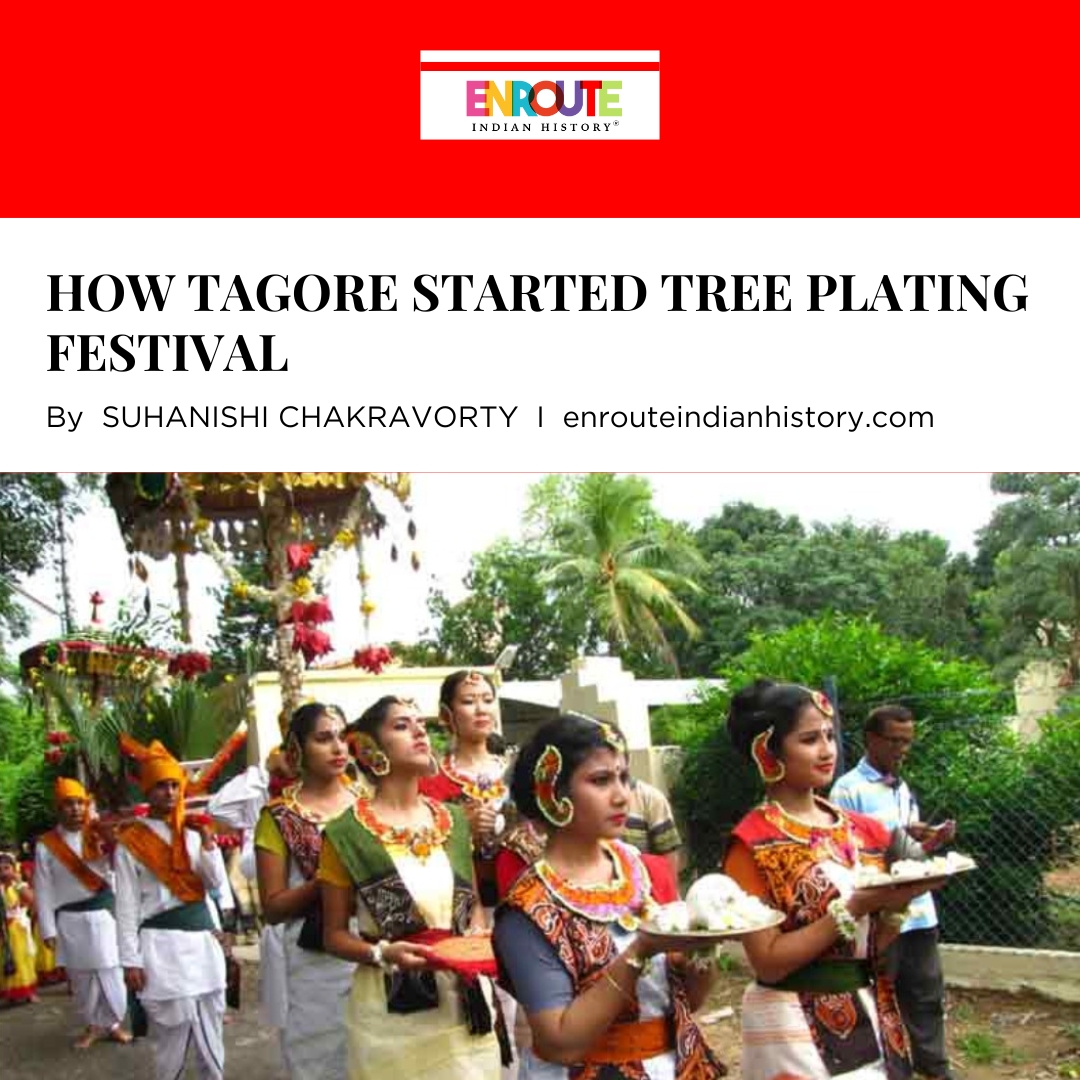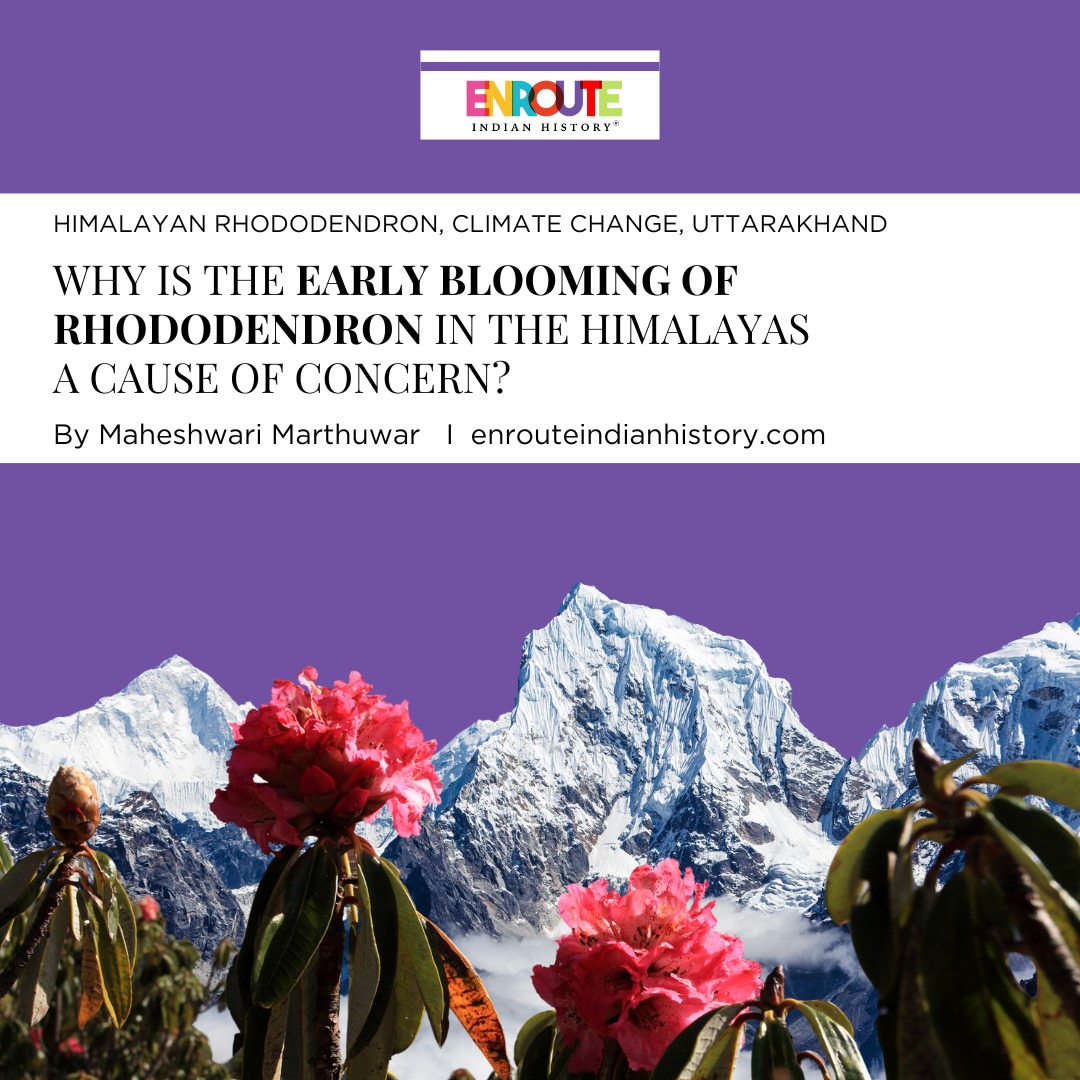
Postor Panchali: The Spice’s Journey from Makeshift Santhali Staple to Coveted Bengali Delicacy
Amidst the vast and varied expanse of Indian food traditions, Bengali cuisine is especially well-known for its subtle flavours, and its use of fresh, regional ingredients in crafting deceptively simple meals. This article charts the panchali (journey song) of posto—a special spice that, because of its unparalleled versatility, occupies a place of pride in every Bengali kitchen. With its mild, nutty taste, the history of posto is inextricably intertwined with Mughal rule in the subcontinent, the exploitative trade practices of the British East India Company, the Opium Wars fought in China, and India’s contemporary crackdown on drug use.
Posto and its use in Bengali cuisine:
Posto, or ground poppy seeds, features across culinary cultures emerging from the subcontinent: it is known as khuskhus in Hindi, afuguti in Assamese, kasakasa in Tamil, and gasagase in Kannada. Despite its inclusion in other Indian food traditions, in the words of food historian and writer Chitrita Banerji, “its prolific, enthusiastic, even singleminded utilisation is only to be seen in Bengal”. It is in Bengali (or closely related Bihari and Bangladeshi) kitchens that ground poppy seeds are put to their myriad uses—as a standalone spice, as a condiment for other dishes, as a thickener for gravies and curries, or simply as a relish offering the final touch to a sumptuous main course. The nutty, earthy taste of posto is invaluable in tempering the bitterness of Bengal’s signature vegetarian delicacy, shukto, an ingenious medley of bitter gourd, drumsticks, potatoes and brinjal. As Sohel Sarkar notes in this remarkable article for The Whetstone (2021), posto also finds use in sweet making: poppy seeds are sometimes roasted and peppered on top of a sandesh, to lend crunch and texture to the sugary dessert emblematic of Bengali cuisine.
The production of posto:
To produce posto involves processing the Papaver somniferum plant, more commonly called the opium poppy. The drug opium is derived from the latex of the poppy pods, which, once processed, leave behind the white posto seeds. These seeds do not have any narcotic residual, but do produce a slightly soporific or sleep-inducing effect (Sarkar 2021). Thus, it is a running joke in my Bengali household that any lunch that includes aloo-posto (a dish made of potatoes and poppy seed paste) must invariably be followed by a quick afternoon nap. It is also useful to note that posto is not the only spice in Indian food traditions that bears an association with narcotics: jaiphal or nutmeg is another excellent example of a spice that finds a place in many everyday meals across the Indian subcontinent, but can also be used to induce psychogenic effects.
The use of poppy flowers for opium production has a long documented history in the subcontinent, mostly for its utility as a medicinal drug. Pritha Sen (2016) remarks on the inclusion of poppy in the Dhanwantari Nighantu, an Ayurvedic text composed at some point between the 8th and 10th century CE. According to Sen, it was under Mughal rule, and especially at the time of Emperor Akbar, that opium became more widely consumed as a recreational drug. To meet the newfound demand for the commodity, the production of poppy was even encouraged through royal decree. Due to the spike in opium production, and therefore, the abundance of seeds left behind post-opium extraction, posto began finding its way to Mughal kitchens, predominantly used in the form of a paste that thickened gravies and lent texture to meat and chicken preparations (Banerji 2007).

(a)

(b)
Figure (a): Papaver somniferum or the opium poppy flower. Source: Wikispecies.
Figure (b): Fragment of a late 17th-century Mughal floorspread, featuring the opium poppy flower. Source: The Metropolitan Museum of Art, New York.
Posto and the British East India Company:
When the British established control over the Bengal province after winning the 1757 Battle of Plassey, they found themselves facing an enticing entrepreneurial opportunity. The fertile tracts of Bengal were incredibly well-suited for poppy production, and the quality of poppy produced in the region was far superior to what was produced lower in the subcontinent (for instance, in western provinces). Further, with Chinese emperor Yongzheng banning the sale and smoking of opium in 1729 in response to alarming rates of opium addiction, the British began smuggling Bengal-produced opium across borders. This was an astoundingly advantageous practice for the British, and became the premise of their daring challenge to the Chinese ruling class—a tussle that culminated in the Opium Wars and the Treaty of Nanking. By 1839, opium sales to China, for which the Chinese paid in silver, were profitable enough to finance the entirety of the British tea trade with China, offsetting the trade imbalance between the two nations (National Army Museum).
Impact on Cultivators in Bengal:
To support this thriving smuggling business, the British East India Company demanded that enormous tracts of Bengal’s fertile land be devoted to poppy production, to collect what Sen has called “the crimson booty of the British” (2016). In his recent research on colonial cultivation, Rolf Bauer details how devastating and exploitative the opium production enterprise was, especially for poor farmers and cultivators. In his book The Peasant Production of Opium in Nineteenth-Century India (2019), he explains how the East India Company established an Opium Agency. The Agency offered attractive interest-free advance payments to poor farmers who agreed to swap their food crops for poppy planting. However, since the price peasants received for their opium did not even cover the cost of growing it, they found themselves caught in endless debt cycles.

(c)

(d)
Figure (c): The Stacking Room, Opium Factory at Patna, India. Lithograph by W. S. Sherwill (1850). Source: Wellcome Images
Figure (d): Opium Manufacture Commissioned by the East India Company. From a set of images by Shiva Lal (1857-60). Source: Victoria and Albert Museum, London
Impoverished and harangued by stiff production targets fixed by the Opium Agency, the farmers were forced to keep producing poppy. There are records of local landowners forcing tenants to grow poppy. Recalcitrant and uncooperative peasants were “kidnapped, arrested and threatened with destruction of crops, criminal prosecution and jail” if they refused to grow the crop (Biswas 2019). At its peak, poppy fields covered nearly 500,000 acres of land and employed 1.5 million small farmer households across Bengal and Bihar (Sarkar 2021). Eventually, opium became the second largest source of revenue for the colonial state, exceeded only by the outrageously high land taxes levied across the subcontinent. The British retained their monopoly over opium production until India gained its independence in 1947.
Poverty and Ingenuity:
Alongside the cultivation of indigo—another cash crop—the devotion of fertile agricultural land to poppy planting came at the cost of food crops that were traditionally grown on those tracts. This resulted in widespread hunger across the Bengal province, a region that was already predisposed to famines, both natural and human-caused. The women in poor cultivating families had to display immense resourcefulness and tenacity in their search for ways to fill their loved ones’ stomachs. Posto proliferated into Bengali cuisine under these circumstances—it was a “culinary upcycling” (Sarkar 2021) of the enormous quantities of poppy seeds that had become available as leftovers of the colonial opium trade practices. Often left as garbage outside of opium factories and warehouses, lower caste and class women collected the tiny white poppy seeds and began cooking with them.

(e)

(f)
Figure (e): Posto seeds. Source: Joanna Wnuk / Shutterstock
Figure (f): Watercolour of an Opium Godown (Storehouse) in Patna, Bihar by Sita Ram (1814-15). Source: Wikimedia
In Eating India, Banerji includes a conversation with a Santhali (a dominant tribe in the Bengal and Jharkhand region) man who remarks that posto became a staple in Santhali kitchens, even after coercive poppy production ended upon Indian Independence. Posto is, of course, not the only Indian food that was born out of dire necessity. It is not even the only example from Bengali cuisine. In a sharp, provocative article for Atlas Obscura, Sharanya Deepak (2020) charts how food scarcity in Bengal has shaped Bengali cuisine for centuries, citing the stories of specific dishes like googli (small snails) and kochu shaak (fibrous leaves of the taro plant), as well as general Bengali cuisine techniques like thickening curries with starch, cooking with vegetable skins, and eating flower petals (Deepak 2020).
Nonetheless, the difference between posto and all these other examples is that, while googli and kochu shaak remain foods of the margins—considered impoverished options, dishes that do not belong to mainstream Bengali culinary tradition, and whose histories (and origins in famine) have been suppressed and sidelined—posto is a celebrated, central, (arguably) crowning element of Bengali cuisine. Sarkar states that it is relatively unknown how posto became a feature of upper-class, upper-caste Bengali kitchens, but notes a reference to posto in recipes collected by the women of the Tagore family in the early 1900s (2021). Besides being added to dishes like egg, fish and meat gravies, posto was also embraced by Vaishnavite communities in Bengal, who used its delicate, almost herbal flavour in their vegetarian food traditions. Banerji (2007) suggests that it was perhaps the invention of posto bata—ground posto, soaked in water, and mixed with oil, salt and chillies—that became especially attractive across castes and classes. “In the perishing heat of the summer, posto cools the body like few other things”, she remarks.
The Consumption of posto today:
Today, a one-kilogram branded pack of posto retails for an astounding 2000 rupees. If you go to a Bengali grocery store and buy a local brand, you might get a small discount and manage to source a kilogram of posto for 1800-1900 rupees. As of 2011 Census data, more than 22 % of West Bengal’s rural population and nearly 15% of the urban population live below the poverty line (monthly income less than 783 and 981 rupees respectively) (RBI). This puts posto, a spice whose modern use originated amongst the poorest of the poor, well beyond the budget of the lower-class Bengali community. Like caviar and oysters, which originated as common people’s food, posto is now a luxury, and one of the most expensive offerings in the annals of Indian food traditions.
This change is mostly because of a sharp decline in the availability of poppy seeds. The opium trade with China ended around 1915, and posto began being packaged and sold commercially in domestic markets. Post-Independence, the government began regulating the production of opium through the Narcotics Control Bureau—opium could now only be produced legally for medicinal purposes, opium poppies needed to be cultivated under the Bureau’s supervision, and the extracts were handed over directly to pharmaceutical companies (Sarkar 2021). A large share of seeds are imported from Turkey and Europe, and import costs and fluctuations in international markets also cause price spikes.
Today, as a result of this unaffordability, certain areas of West Bengal are infamous for being hubs of illegal poppy cultivation. My Bengali friends—who bring back large amounts of posto whenever they visit home—joke that if their suitcases ever get lost, anyone who finds them would assume they belong to the head of such an illegal poppy farm. Jokes and jests aside, the contemporary inaccessibility of posto is an important illustration of how food practices are often wrested away from the communities that develop them—celebrated to the point of dehistoricisation, and commercialised to the point of alienation.

(g)
Figure (g): Posto bora, straight from my mother’s kitchen. In this preparation, a course paste of posto is mixed with onions and chillies to form a flattened ball, which is then lightly fried. Source: Author.
References:
Banerji, C. (2007). Eating India. New York: Bloomsbury.
Bauer, R. (2019). The Peasant Production of Opium in Nineteenth-Century India. Leiden: Koninklijke Brill Nv.
Biswas, S. (2019). How Britain’s Opium Trade Impoverished Indians. BBC News. 5 Sep. https://www.bbc.com/news/world-asia-india-49404024.
Deepak, S. (2020). A ‘Forgotten Holocaust’ Is Missing From Indian Food Stories. Atlas Obscura. https://www.atlasobscura.com/articles/indian-food-writing.
National Army Museum (n.d.). First China War. National Army Museum. https://www.nam.ac.uk/explore/first-china-war-1839-1842#:~:text=To%20rectify%20this%20trade%20imbalance.
Perdue, P.C. (2011). MIT Visualizing Cultures. https://visualizingcultures.mit.edu/opium_wars_01/ow1_essay02.html.
Reserve Bank of India (2022). Handbook of Statistics on Indian Economy. https://rbi.org.in/scripts/PublicationsView.aspx?id=21248.
Sarkar, S. (2021). The True Cost Of Posto. Whetstone Magazine. https://www.whetstonemagazine.com/south-asia-journal/the-true-cost-of-posto.
Sen, P. (2016). How British Greed Spurred the Creation of One of Bengal’s Most Loved Dishes. The Indian Express. https://indianexpress.com/article/lifestyle/food-wine/how-british-greed-spurred-the-creation-of-one-of-bengals-most-loved-dishes/#:~:text=The%20story%20of%20alu%2Dposto.
- May 15, 2024
- 6 Min Read


























